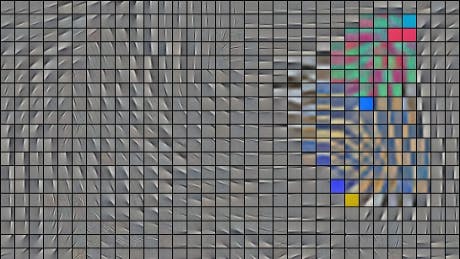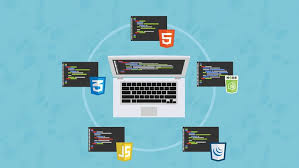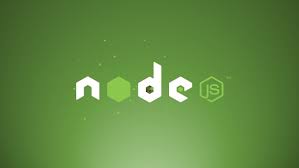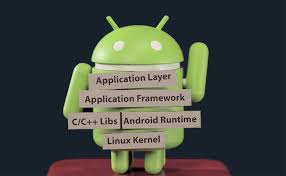Free Knowledge
The world is shifting from a one-time education to a lifelong education. More and more people have to go from one job to a new job, and that means that you have to move away from a one-time degree—and then done for the rest of your life—into a world where education is intermingled with your normal life, and your work life. The MOOCs below are what help me keep up with the rapid pace of technology and develop relevant skills for technical work.
Deep Reinforcement Learning (UC Berkeley)
Deep reinforcement learning is one of AI’s hottest fields. Researchers, engineers, and investors are excited by its world-changing potential. In this course, you’ll master techniques like Deep Q-Learning and Actor-Critic Methods, and connect with experts from NVIDIA and Unity as you build a portfolio of your own reinforcement learning projects.
mining of massive datasets (Stanford)
In this course, you will learn many of the interesting algorithms that have been developed for efficient processing of large amounts of data in order to extract simple and useful models of that data. These techniques are often used to predict properties of future instances of the same sort of data, or simply to make sense of the data already available. Many people view data mining, or "big data" as machine learning. There are indeed some techniques for processing large datasets that can be considered machine learning, and we shall cover a number of these. But there are also many algorithms and ideas for dealing with big data that are not usually classified as machine learning, and we shall cover many of these as well.
Convolutional Neural Networks for Visual Recognition (Stanford)
Computer Vision has become ubiquitous in our society, with applications in search, image understanding, apps, mapping, medicine, drones, and self-driving cars. Core to many of these applications are visual recognition tasks such as image classification, localization and detection. Recent developments in neural network (aka “deep learning”) approaches have greatly advanced the performance of these state-of-the-art visual recognition systems. This course is a deep dive into details of the deep learning architectures with a focus on learning end-to-end models for these tasks, particularly image classification. During the 10-week course, students will learn to implement, train and debug their own neural networks and gain a detailed understanding of cutting-edge research in computer vision. The final assignment will involve training a multi-million parameter convolutional neural network and applying it on the largest image classification dataset (ImageNet). We will focus on teaching how to set up the problem of image recognition, the learning algorithms (e.g. backpropagation), practical engineering tricks for training and fine-tuning the networks and guide the students through hands-on assignments and a final course project. Much of the background and materials of this course will be drawn from the ImageNet Challenge.
Natural Language Processing with Deep Learning (Stanford)
Natural language processing (NLP) is one of the most important technologies of the information age. Understanding complex language utterances is also a crucial part of artificial intelligence. Applications of NLP are everywhere because people communicate most everything in language: web search, advertisement, emails, customer service, language translation, radiology reports, etc. There are a large variety of underlying tasks and machine learning models behind NLP applications. Recently, deep learning approaches have obtained very high performance across many different NLP tasks. These models can often be trained with a single end-to-end model and do not require traditional, task-specific feature engineering. In this winter quarter course students will learn to implement, train, debug, visualize and invent their own neural network models. The course provides a thorough introduction to cutting-edge research in deep learning applied to NLP. On the model side we will cover word vector representations, window-based neural networks, recurrent neural networks, long-short-term-memory models, recursive neural networks, convolutional neural networks as well as some recent models involving a memory component. Through lectures and programming assignments students will learn the necessary engineering tricks for making neural networks work on practical problems.
Neural Networks for Machine Learning (Coursera)
Learn about artificial neural networks and how they're being used for machine learning, as applied to speech and object recognition, image segmentation, modeling language and human motion, etc. We'll emphasize both the basic algorithms and the practical tricks needed to get them to work well. This course contains the same content presented on Coursera beginning in 2013. It is not a continuation or update of the original course. It has been adapted for the new platform. Please be advised that the course is suited for an intermediate level learner - comfortable with calculus and with experience programming (Python).
Introduction to Computer Networking (Stanford Lagunita)
This is a self-paced introductory course on computer networking, specifically the Internet. It focuses on explaining how the Internet works, ranging from how bits are modulated on wires and in wireless to application-level protocols like BitTorrent and HTTP. It also explains the principles of how to design networks and network protocols. Students gain experience reading and understanding RFCs (Internet protocol specifications) as statements of what a system should do. The course grounds many of the concepts in current practice and recent developments, such as net neutrality and DNS security. A textbook is recommended, but not required: you can use either Peterson and Davie or Kurose and Ross, any version in the past 5 years will do.
introduction to operating systems (udacity)
Introduction to Operating Systems is a graduate-level introductory course in operating systems. This course teaches the basic operating system abstractions, mechanisms, and their implementations. The core of the course contains concurrent programming (threads and synchronization), inter process communication, and an introduction to distributed operating systems. The course is split into four sections: (1) Introduction, (2) Process and Thread Management, (3) Resource Management and Communication, and (4) Distributed Systems.
deep learning (udacity)
Machine learning is one of the fastest-growing and most exciting fields out there, and deep learning represents its true bleeding edge. In this course, you’ll develop a clear understanding of the motivation for deep learning, and design intelligent systems that learn from complex and/or large-scale datasets.
We’ll show you how to train and optimize basic neural networks, convolutional neural networks, and long short term memory networks. Complete learning systems in TensorFlow will be introduced via projects and assignments. You will learn to solve new classes of problems that were once thought prohibitively challenging, and come to better appreciate the complex nature of human intelligence as you solve these same problems effortlessly using deep learning methods.
Machine learning (coursera)
This course provides a broad introduction to machine learning, data mining, and statistical pattern recognition. Topics include: (i) Supervised learning (parametric/non-parametric algorithms, support vector machines, kernels, neural networks). (ii) Unsupervised learning (clustering, dimensionality reduction, recommender systems, deep learning). (iii) Best practices in machine learning (bias/variance theory; innovation process in machine learning and AI). The course will also draw from numerous case studies and applications, so that you'll also learn how to apply learning algorithms to building smart robots (perception, control), text understanding (web search, anti-spam), computer vision, medical informatics, audio, database mining, and other areas.
algorithm design & analysis (coursera)
Specific topics in Part 1 include: "Big-oh" notation, sorting and searching, divide and conquer (master method, integer and matrix multiplication, closest pair), randomized algorithms (QuickSort, contraction algorithm for min cuts), data structures (heaps, balanced search trees, hash tables, bloom filters), graph primitives (applications of BFS and DFS, connectivity, shortest paths).
Specific topics in Part 2 include: greedy algorithms (scheduling, minimum spanning trees, clustering, Huffman codes), dynamic programming (knapsack, sequence alignment, optimal search trees, shortest paths), NP-completeness and what it means for the algorithm designer, analysis of heuristics, local search.
statistical learning (stanford lagunita)
This is an introductory-level course in supervised learning, with a focus on regression and classification methods. The syllabus includes: linear and polynomial regression, logistic regression and linear discriminant analysis; cross-validation and the bootstrap, model selection and regularization methods (ridge and lasso); nonlinear models, splines and generalized additive models; tree-based methods, random forests and boosting; support-vector machines. Some unsupervised learning methods are discussed: principal components and clustering (k-means and hierarchical).
web developer bootcamp (udemy)
Tools and technologies covered throughout the course include: HTML5, CSS3, JavaScript, Bootstrap, SemanticUI, DOM Manipulation, jQuery, Unix(Command Line) Commands, NodeJS, NPM, ExpressJS, REST, MongoDB, Database Associations, Authentication, PassportJS, Authorization.
learn and understand nodejs (udemy)
NodeJS is a rapidly growing web server technology, and Node developers are among the highest paid in the industry. Knowing NodeJS well will get you a job or improve your current one by enabling you to build high quality, robust web applications. In this course you will gain a deep understanding of Node, learn how NodeJS works under the hood, and how that knowledge helps you avoid common pitfalls and drastically improve your ability to debug problems.
ruby on rails for web development (udemy)
Ruby on Rails can seem overwhelming at first, but it doesn’t have to be! In this course I’ll walk you through it step by step and you’ll be building your first web app in MINUTES. You’ll be amazed how quick and easy it is to create very professional looking websites, even if you have no programming or web design experience at all.
Tweetme | Build a Twitter-like app with Django (Udemy)
Social media has changed the way we communicate with each other. The power behind social media allows us to do amazing things together. What exactly is behind it? Well.. it's Simple Web Application concepts that can be applied to ALL and ANY web applications that you may build. In this course we're going to teach you what's behind how Twitter works. Now, Twitter has hundreds of developers so what we're actually building is the basis of what Twitter once was, the absolute most simple things by learning more Django along the way.
developing android apps (udacity)
This course blends theory and practice to help you build great apps the right way. In this course, you'll work with instructors step-by-step to build a cloud-connected Android app, and learn best practices of mobile development, and Android development in particular.
The Complete React Native and Redux Course (Udemy)
React Native is an excellent solution for developing apps on mobile in a fraction of the time it takes to make an equivalent iOS or Swift app. You'll love seeing your changes instantly appear on your own device, rather than waiting for Swift/Java code to recompile! This quick feedback loop, along with excellent cross platform support, is what has catapulted React Native to the top must-have skill for Javascript engineers.
intro to machine learning (udacity)
Machine learning brings together computer science and statistics to harness that predictive power. It’s a must-have skill for all aspiring data analysts and data scientists, or anyone else who wants to wrestle all that raw data into refined trends and predictions. This is a class that will teach you the end-to-end process of investigating data through a machine learning lens. It will teach you how to extract and identify useful features that best represent your data, a few of the most important machine learning algorithms, and how to evaluate the performance of your machine learning algorithms.
Meteor and React for Realtime Apps (Udemy)
Meteor JS can get you a position in web development or help you build that personal project you've been dreaming of. Meteor is the ultimate framework for developer productivity; it is bar-none the fastest technology you can use to make fast and interactive web apps in just a few hours.
software development process (udacity)
The course covers requirements engineering, architecture and design, testing and maintenance, and software quality in general.The goal of this class is to equip you with the skills necessary to define requirements, set up an integrated development environment (IDE), learn Git (and Github!) and use Unified Modeling Language (UML) to design and build an Android application. We will also examine several testing practices and refactoring techniques that are helpful before the launch of your software project.
data analysis with r (udacity)
Exploratory data analysis focuses on exploring data to understand the data’s underlying structure and variables, to develop intuition about the data set, to consider how that data set came into existence, and to decide how it can be investigated with more formal statistical methods.
data wrangling with mongodb (udacity)
In this course, we will explore how to wrangle data from diverse sources and shape it to enable data-driven applications. Students will learn how to gather and extract data from widely used data formats. They will learn how to assess the quality of data and explore best practices for data cleaning. We will also introduce students to MongoDB, covering the essentials of storing data and the MongoDB query language together with exploratory analysis using the MongoDB aggregation framework.






















